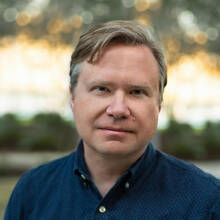Is there life after college?
When I taught at a small, Catholic college in the Rust Belt, I faced a dilemma. I wanted my working-class students to enjoy professional success, yet I also wanted them to question the values and habits—like opportunism and overwork—that make professional success possible. How could I foster both their ambition and a commitment to the common good?
The students themselves were more concerned with getting a firmer foothold in the middle class. They justifiably fretted about repaying student loans and steered toward majors in business and health sciences, while dreaming of BMW’s and cruises. They believed the prevailing wisdom that a degree—a “very expensive piece of paper”—is the sole ticket to success in the postindustrial economy. To them, and to our political elite for that matter, college is about getting a job. Period. Theology classes like mine were just in the way.
Prospective college students (and their parents) who have similar concerns are the audience for There Is Life After College, by Jeffrey Selingo, a former editor in chief of The Chronicle of Higher Education. The book offers detailed guidance on managing the entire slate of decisions a potential college student must make, including whether to go to college right after high school, where one should attend and how to find internships along the way. Through it all, careerism remains unquestioned.
Selingo begins with a three-category taxonomy of twentysomethings, based on a survey he commissioned. Sprinters charge through college and into a career with unwavering focus. Wanderers are those who “earned a college degree but run into trouble along the way to adulthood.” And stragglers typically drop out of school and persist in low-wage work or unemployment.
The categories are tacitly moral. Throughout the book, Selingo denigrates any vision of flourishing apart from professional success. He interviews a young woman who he says “had fond memories of Davidson [College] for allowing her to pursue her dreams” but who regretted not acquiring “the explicit know-how sought by employers today.” It is a narrow moral universe, in which the opportunity to pursue dreams is a consolation prize.
Similarly, Selingo refers to Portland, Ore., as a haven for young people with fitful careers but who “were remaining nonetheless, attracted by the city’s nearby mountains, mild winters, outdoorsy reputation, and streak of independence.” These “stragglers” seem to me to have their priorities straight, valuing active leisure and experiences with nature ahead of their résumés.
To understand how higher education can feed students’ economic interest (and, more to the point, company profits), Selingo interviews dozens of students, alumni, business leaders and university administrators. He interviews professors, too, but only insofar as they are experts on the job market. I found only one place in the book—a single sentence—where Selingo noted how a professor’s pedagogy aims to promote students’ development.
The gaps in Selingo’s approach mirror much in the marketing strategies of colleges themselves, which often threaten to overtake their missions. Visit a college campus or website as a prospective student, and you will find out much about student life and job placement. How you will learn, and who will do the teaching, will probably be an afterthought. But as Daniel Chambliss and Christopher Takacs show in their book How College Works (2014), relationships with professors as teachers and mentors are indispensable for students to learn, form virtuous habits and find their college experience meaningful.
Despite the rising tuition at Catholic colleges, many of them are in bleak financial shape. They also face a crisis of identity. They claim in mission statements to transform students and society, to orient people toward the good. But in order to attract students, and thus revenue, they feel they must present themselves as fulfilling students’ pre-existing desires for material success. Claiming to transform students’ desires seems risky. As Simon Newman, the financier who served briefly as president of Mount St. Mary’s University in Emmitsburg, Md., allegedly put it, “Catholic doesn’t sell” and “liberal arts doesn’t sell.”
Selingo justifies aligning education with a career by noting again and again that companies are reluctant to invest in training workers. “For American education to remain relevant to students, it must abandon the antiquated idea that schools and colleges broadly educate people for life while employers train them for jobs,” he writes. Because “employers want graduates pretrained for a job,” it is up to colleges to train them, at the inevitable expense of failing to educate them for life. Selingo nods toward a broader approach in the final chapter, but here, too, he sees disciplines like philosophy as helpful mainly for narrating one’s career moves.
There is an irony in deferring, as Selingo does, to business leaders’ complaint that college graduates lack adequate business skills. With rare exceptions, those leaders graduated from American colleges, too, and if colleges are as hidebound as Selingo says they are, then those leaders must also have graduated without business skills. And yet there they sit, at the head of the conference table.
Selingo further undermines his argument by reporting, in a chapter on hiring, that the corporate recruiters he interviewed “often didn’t know what they wanted, revealing a level of dysfunction for matching talent and opportunity that I didn’t expect in an economy as advanced as that of the United States.” In other words, Selingo is asking students to shape their lives according to arbitrary and unfair demands. Following his advice guarantees nothing.
There is indeed life after college, and there is more to life than a career.
This article also appeared in print, under the headline “From Gown to Town,” in the October 31, 2016, issue.








